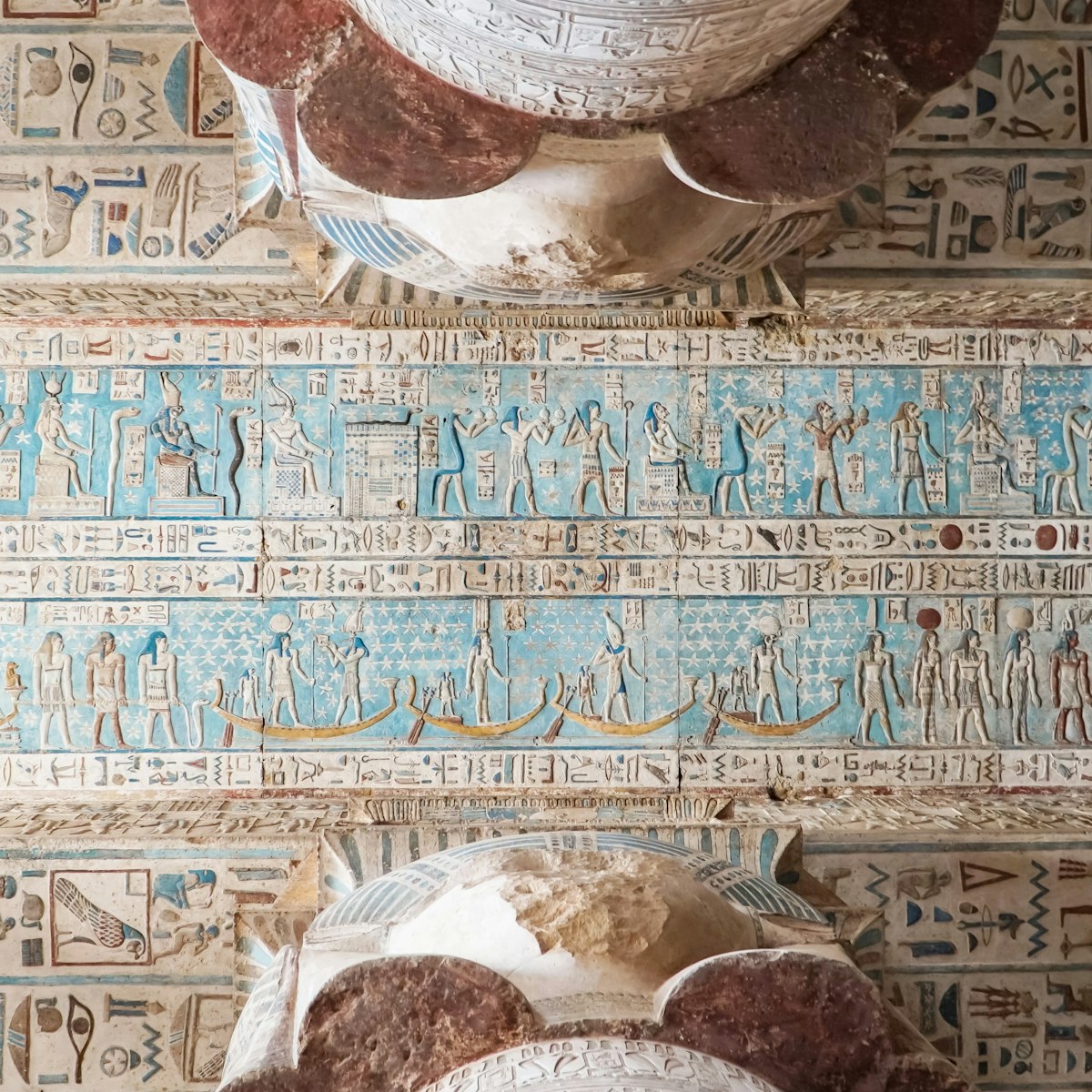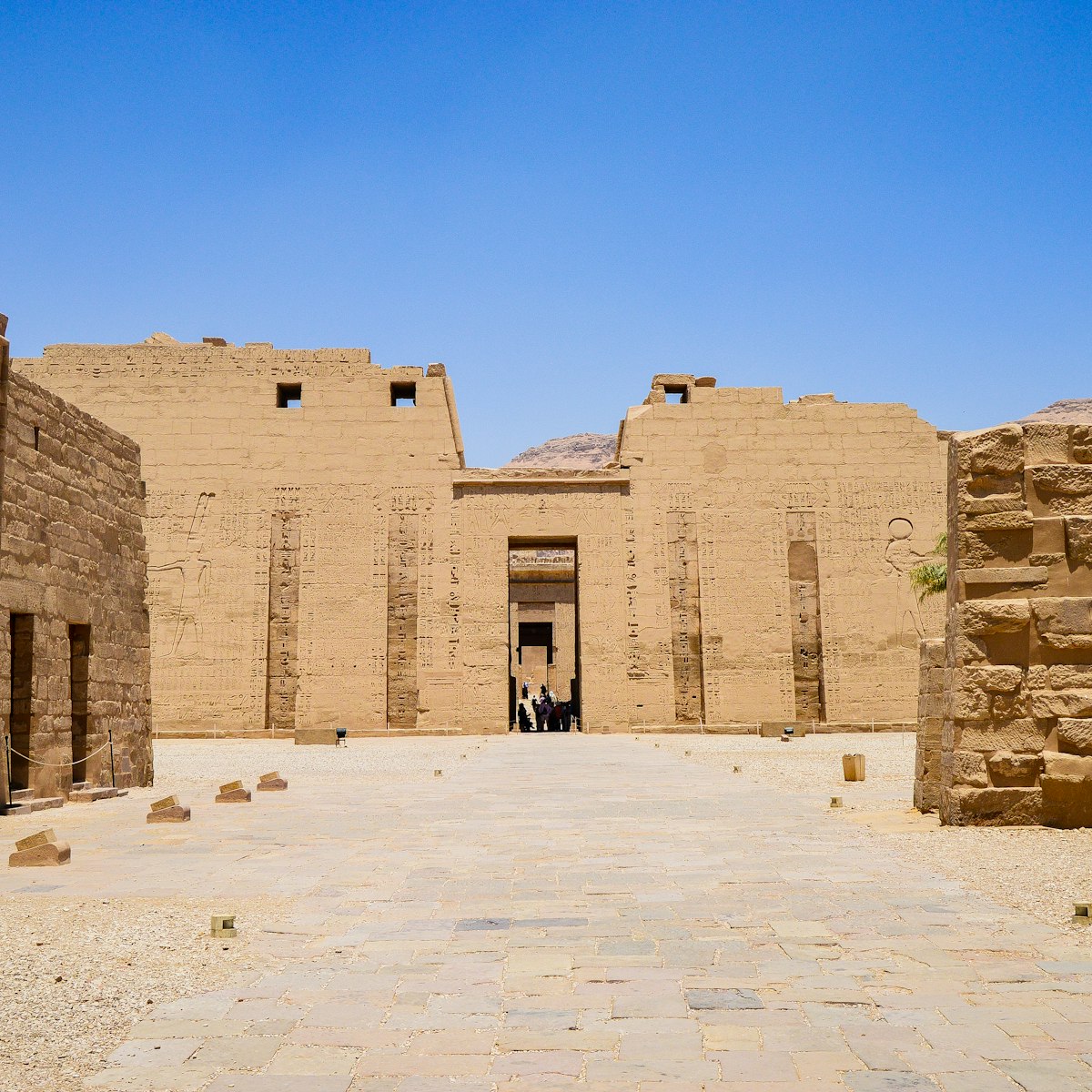The tomb of Tuthmosis IV (1400–1390 BC) is one of the largest and deepest tombs constructed during the 18th dynasty. It is also the first in which paint was applied over a yellow background, beginning a tradition that was continued in many tombs. It was discovered in 1903 by Howard Carter, 20 years earlier than the tomb of Tuthmosis IV’s great-grandson, Tutankhamun.
It is accessed by two long flights of steps leading down and around to the burial chamber where there’s an enormous sarcophagus covered in hieroglyphs. The walls of the well shaft and antechamber are decorated with painted scenes of Tuthmosis before the gods, and the figures of the goddess Hathor are particularly fetching in a range of beautiful dresses decorated with beaded designs.
On the left (south) wall of the antechamber there is a patch of ancient Egyptian graffiti dating back to 1315 BC. It was written by government official Maya and his assistant Djehutymose, and refers to their inspection and restoration of Tuthmosis IV’s burial on the orders of Horemheb, following the first wave of robbery in the eighth year of Horemheb’s reign, some 67 years after Tuthmosis IV died.







